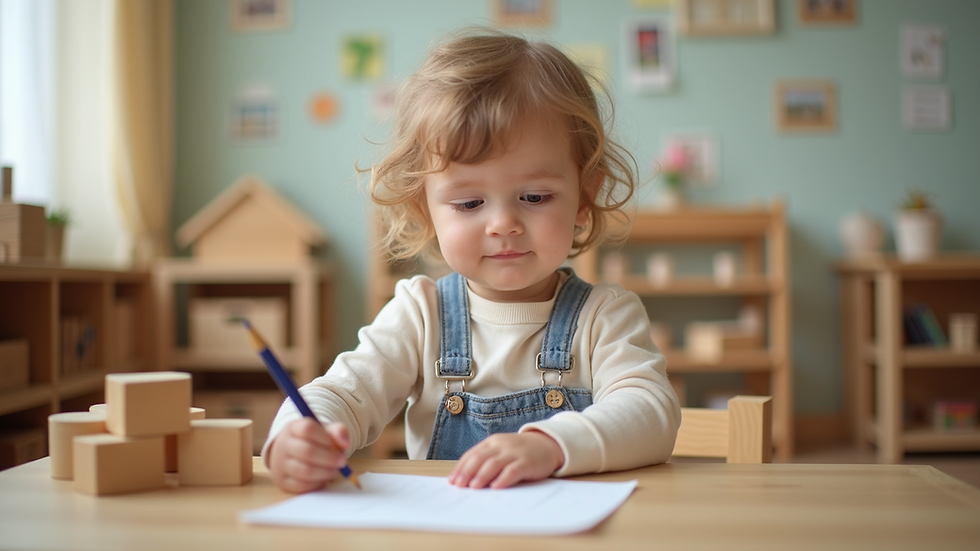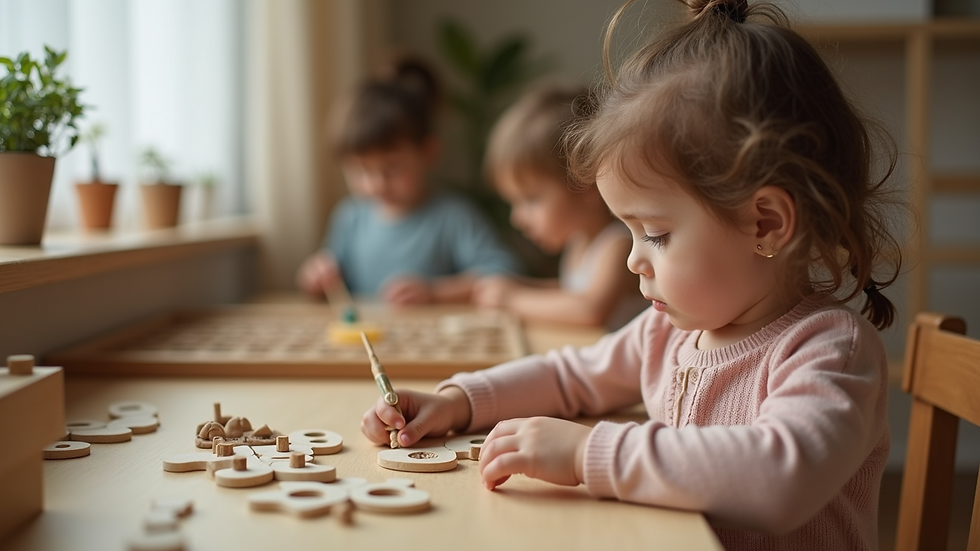Maria Montessori's Teaching Methods: A Legacy in Education
- lina@mindfulmontessori

- Sep 2
- 3 min read
Maria Montessori's approach to education has transformed classrooms worldwide. Her innovative methods focus on nurturing a child's natural curiosity and independence. This blog post explores the core principles of Montessori teaching methods, their practical applications, and how they continue to influence modern education.
Understanding Montessori Teaching Methods
Montessori teaching methods emphasize a child-centered approach. Instead of traditional teacher-led instruction, children learn through exploration and hands-on activities. This method encourages self-directed learning, allowing children to develop at their own pace.
Key features of Montessori teaching methods include:
Prepared Environment: Classrooms are designed to be inviting and accessible, with materials arranged to promote independence.
Mixed Age Groups: Children of different ages learn together, fostering peer learning and social development.
Specialized Materials: Montessori materials are designed to teach specific concepts through tactile and visual experiences.
Teacher as Guide: Educators observe and support rather than direct, allowing children to take the lead in their learning journey.
These elements create a dynamic learning environment where children feel empowered and motivated.

What is Maria Montessori's Method of Teaching?
Maria Montessori's method of teaching is grounded in respect for the child as an individual. It is based on scientific observations of children's learning processes. The method focuses on developing the whole child - intellectually, socially, emotionally, and physically.
The teaching method involves:
Observation: Teachers carefully observe each child to understand their interests and developmental needs.
Freedom within Limits: Children choose activities freely but within a structured environment that promotes responsibility.
Hands-On Learning: Learning materials are designed to be self-correcting, encouraging children to learn through trial and error.
Focus on Practical Life Skills: Activities include real-life tasks like pouring, cleaning, and dressing, which build coordination and independence.
Sequential Learning: Concepts are introduced in a logical order, building on previous knowledge.
This approach helps children develop concentration, coordination, and a love for learning.

Practical Applications of Montessori Teaching Methods
Implementing Montessori teaching methods can be done in various educational settings, from preschools to elementary schools. Here are some practical ways to apply these methods:
Create a Prepared Environment: Arrange the classroom with accessible shelves, child-sized furniture, and organized materials.
Encourage Choice: Allow children to select activities that interest them, fostering autonomy.
Use Montessori Materials: Incorporate tactile and sensory materials that teach concepts like math, language, and science.
Promote Mixed-Age Interaction: Group children of different ages to encourage mentorship and collaboration.
Observe and Adapt: Teachers should observe children regularly and adjust the environment and activities to meet their evolving needs.
Parents can also adopt Montessori principles at home by providing opportunities for children to engage in practical life activities and self-directed play.

Benefits of Montessori Teaching Methods
The benefits of Montessori teaching methods are well-documented and include:
Enhanced Independence: Children learn to manage tasks on their own, boosting confidence.
Improved Concentration: The method encourages deep focus through engaging activities.
Development of Social Skills: Mixed-age classrooms promote cooperation and empathy.
Love of Learning: Children develop intrinsic motivation to explore and discover.
Holistic Growth: The approach supports intellectual, emotional, and physical development.
These benefits contribute to well-rounded individuals prepared for lifelong learning.
Continuing the Legacy of Montessori Education
The legacy of Maria Montessori continues to inspire educators worldwide. Schools adopting maria montessori teaching methods create environments where children thrive. As education evolves, Montessori principles remain relevant, emphasizing respect for the child and the importance of nurturing natural curiosity.
Educators and parents interested in Montessori methods can explore training programs and resources to deepen their understanding. By embracing these teaching methods, we honor Maria Montessori's vision of education as a tool for peace and human development.
Maria Montessori's teaching methods offer a timeless framework for education that respects and nurtures the unique potential of every child. Through prepared environments, hands-on learning, and a focus on independence, Montessori education continues to shape the future of learning.




Comments